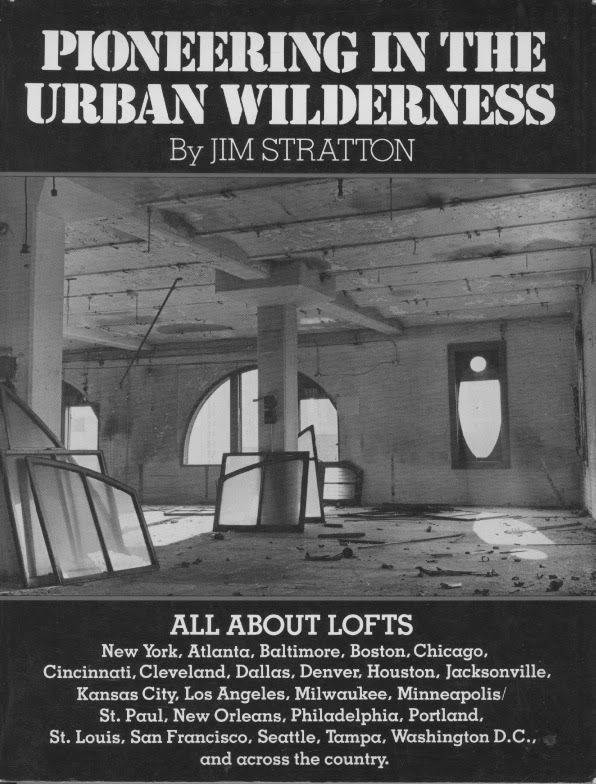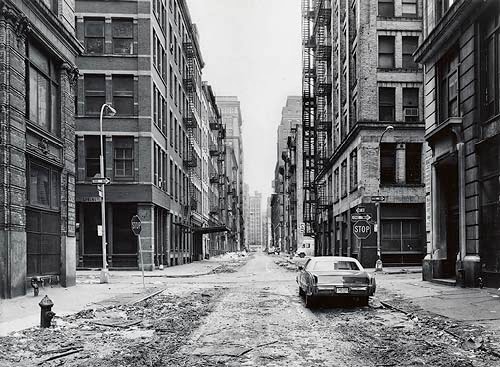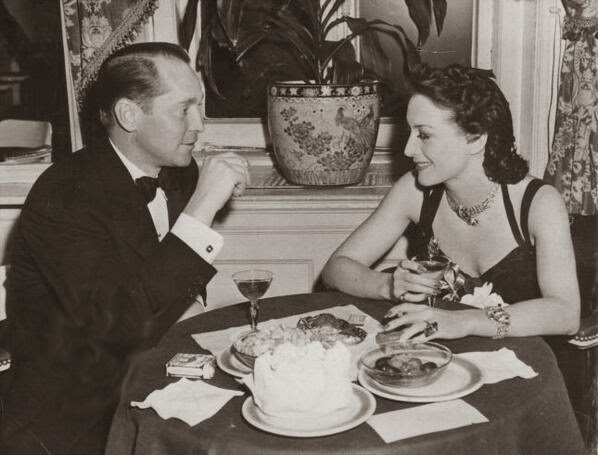Soho, 1970’s (photo from Soho Memory Project)
A few weeks ago I went to Red Hook, Brooklyn to visit a wonderful new restaurant called Grindhaus (*featured in my merguez film). In the quiet weekday streets, ancient businesses stand cheek to jowl with new galleries and restaurants and remind me of the ‘vibe’ (how’s that for a throwback word?) of Soho back-in-the-day (sans the cast-iron fronts, of course).
(photo from Soho Memory Project)
Like the Soho of yore, Red Hook has a strong sense of community. Although prices are rising, it's still possible to live there without a trustfund. The restaurant works with a sausage maker down the block to store their meats – neighbors have big parties and everyone brings things they made to the event from food to art. Grindhaus began because the owner found a giant sausage maker in a building basement and had a sausage party for hundreds of neighbors that was such a huge success that everyone urged her to open a restaurant. Hard to believe but that’s what Soho was once like.
Davidovitch photo, 1975 Soho –“raw space” on move-in day (photo from Soho Memory Project)
Years ago, when visiting a pal in California’s Marin County, I met a whole cadre of Soho expats who were reminiscing about 5000 sq. ft. Soho lofts that they rented for $65 a month. Whole buildings sold for $20G. Sadly, few could come up with even that tariff –– they were starving artists, after all (an investment that would be worth tens of millions today, canny artist Donald Judd kept his building that is now his museum). In the 60’s, there was always room for newly arrived artful types from all parts of the world to crash in these vast spaces . Parties went on from floor to floor for days with everyone bringing what they had as they wandered in and out.
David Armstrong photo of my lovely former neighbor, jewelry designer Maripol (left) at the Mudd Club, 1979
Whilst skipping down Soho’s memory lane, I came across a great blog, The Soho Memory Project , run by a lady named Yukie who grew up there in the 70’s (her father was an artist/pioneer). She doesn't just cover the familiar territory of the drug-fueled hijinks at the Mudd Club or the creative crucible that was The Kitchen or swoon over all the barely legal holes-in-the-wall selling local artist’s work for a few bucks that became grand galleries selling multi-million dollar works by some of the same no-longer-starving local artists.
Headline warning of Soho gentrification (photo from Soho Memory Project)
Crosby Street & Spring Street, 1978 (Photo by Thomas Struth from Soho Memory Project)
No, The Soho Memory Project is about the early Soho-ites and the great diversity of lives lived there from the 60’s through the 70’s when Soho ejected most of the 'pioneers' and was transformed into a playground for the rich. Those $65 lofts now go for $20 million. Starving artists had to move to the East Village then the Lower East Side then Williamsburg then Long Island City then Red Hook then Bushwick then Jersey City… and on and on it goes as each generation of starving artists finds their own big cheap place to do what they do only to be displaced and pushed to a new location as the moneyed class discover a new cool. Such is the way of New York. I think you’ll enjoy visiting the blog if you’ve spent any time there. It's a great read with amazing photos.
It wasn’t just the similar Soho ‘vibe’ that brought me back when I visited Red Hook, Grindhaus had a marvelous dish that rang a flavor bell for me.
Cappellacci pasta stuffed with merguez with chickpeas, fritters and purée at Grindhaus
Their beautifully seasoned pasta dish with a rich chickpea sauce** reminded me of a great favorite recipe from a famous Soho artist's kitchen –– a chicken dish with a smooth tahini cloak that I have enjoyed for eons (albeit slightly evolved from the original after decades of making it).
All of these memories coalesced when The Creative Cooking Crew asked for a perfect bite for the challenge this month. To me, a perfect bite is one that hits all the sense receptors. This dish has a touch of sweet, savory (the demi-glace adds a brilliant dark rich note), sour, creamy, crunchy, spicy and cold. It's a perfect bite. No wonder it’s been one of my favorites for so long. It would be a hit at a Soho soirée, then and now. It wouldn't be out of place in Red Hook either –– perfect bites never go out of style.
Soho Chinese Chicken Salad serves 2-4 (depending on size of chicken breast)
1 or 2 Chinese dried peppers(between 2-4" long)
2 T mild oil
2 chicken breasts, cubed
S&P
1 T D'Artagnan demi glace or Knorr chicken bouillon cube
2 T soy sauce
1 T sesame oil
2 T sesame paste
1 T rice vinegar
1 T sugar
2 T chopped scallion
2 cloves minced garlic
1/2 t of ground coriander seed
pinch of sumac (optional)
Chinese cabbage, about 5 c sliced or chopped (reserve some unchopped for decoration)
small bunch coriander/cilantro, whole leaves or chopped (about 1 loose cup)
Sesame seeds for garnish
Sauté the pepper in the oil at medium heat for a few minutes until fragrant and remove. Salt and pepper the chicken. Sauté the chicken in the same oil. When cooked, toss in the demi glace or cube and combine. Remove the chicken and cool, reserving the oil.
In a blender, combine the reserved pepper oil, soy, sesame oil and paste and rice vinegar, sugar and scallion, garlic and spices. Blend. Taste. You may want to add more vinegar if you want more tang. If you like it spicy you can crumble the dried pepper you had toasted in the oil into the mix and blend. Toss the sauce with the chicken and whatever juices have accumulated with it.
This can all be done in advance and reserved. The salad get's soggy once you blend it so you should wait till just before serving OR combine the sauce and the chicken and serve separately with the cabbage and coriander so it is combined on the plate or serve as a true 'bite', the chicken individually placed in cabbage and enjoyed one bite at a time.
I line a bowl (or spoon) with cabbage leaves to serve and sprinkled with sesame seeds. I love this with peppery papadams when I have them on hand.
** Grindhaus changes their menu all the time so this dish is not always available.
** Grindhaus changes their menu all the time so this dish is not always available.
*sorry for another shameless plug but....
My first article is appearing in the magazine SaudiAramcoWorld this month (it has great food history articles going back decades). Mine's about chilies with a fun video on merguez in NYC that I made with my friend, filmmaker Kathy Dougherty. Do visit, won't you??
















































